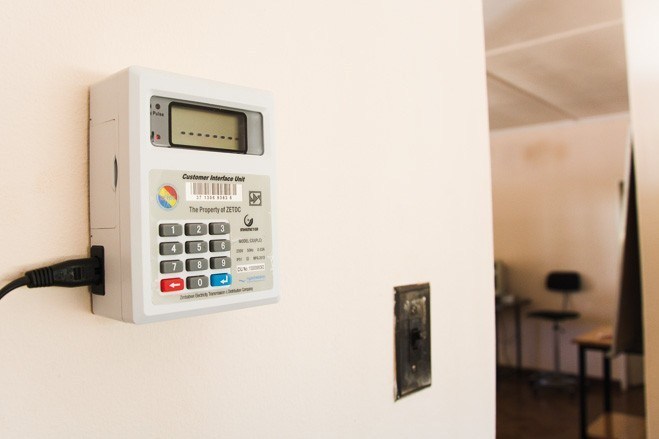Power tariff review, is it the only survival strategy for ZESA
Zimbabwe’s state-owned power utility, Zimbabwe Electricity Supply Authority (ZESA), is at the centre of an intensifying debate about the future of its tariffs and its ability to meet growing operational challenges.
According to an internal source who requested anonymity, there is increasing pressure for the Government to allow ZESA to charge a competitive tariff that would enable it to reinvest in critical infrastructure.
Simultaneously, the utility is reportedly considering introducing an across-the-board US dollar-denominated tariff for both households and industry due to challenges in converting Zimbabwe Gold (ZiG) revenues into US dollars in time to meet its operational needs.
The utility’s struggles reflect the broader issues facing Zimbabwe’s energy sector. ZESA has faced mounting criticism for persistent outages, delayed repairs and an inability to expand its generation and distribution capacity. The challenges have been exacerbated by a mismatch between its revenue collection in local currency and its costs, many of which are denominated in US dollars.
A ZESA insider revealed that there are growing internal and external calls for the utility to be permitted to adjust its tariffs to more competitive levels.
“We need to charge rates that reflect the actual cost of generating and distributing electricity,” the source said. “Without this, ZESA cannot build a sustainable revenue stream to invest in infrastructure upgrades, address maintenance backlogs, or expand capacity.”The source added that, ZESA the entity does not have funds, even if one is to look at their balance sheet.
“If ZESA had the balance sheet they would not be in this mess but they do not. So, they have to go to the Government, who might not see this as an issue.”
“So, what does ZESA do? Precisely, in theory it needs to charge enough that they do operating expenditure and capital expenditure. If we do that well we might even be able to sell bonds like Eskom and other utilities in the USA do,” they added.
Currently, ZESA’s tariffs are regulated by the Government and are often described as being below cost recovery levels, particularly for households. Analysts have pointed out that the disparity between ZESA’s revenue streams and its operational costs leaves the utility in a precarious financial position.
As ZESA faces challenges converting its large ZiG denominated balances into US dollars, a process governed by the Reserve Bank of Zimbabwe (RBZ) it is reportedly considering implementing US dollar tariffs across the board.
This would mean households and industries would pay directly in hard currency, sidestepping the conversion delays and giving ZESA immediate access to foreign currency for its operations.
A financial analyst, Namatai Maeresera, emphasised the importance of resolving the utility’s currency issues.
“ZESA is a crucial entity in Zimbabwe’s economy and its inability to secure timely access to U.S. dollars undermines its capacity to function effectively. The RBZ should consider giving ZESA priority in its foreign currency allocations to ensure the country’s power sector remains viable,” he said.
While industry players might absorb such a tariff adjustment more easily, households could struggle to meet dollar – denominated bills in a country where local currency remains widely used. Consumer rights groups have always raised concerns about the potential burden this move could place on ordinary citizens whenever suggested.
The utility’s financial struggles are mirrored by its operational challenges. Engineers within ZESA have highlighted the dire need for investment in new equipment to expand and modernise the grid.
Speaking to Business Weekly, a senior engineer described the current situation as “unsustainable.”“We do not have enough equipment to respond promptly to faults, let alone expand the grid,” the engineer said. “Transformers, cables, and other critical components are in short supply. Without financial backing and a viable tariff structure, ZESA’s ability to provide reliable service will continue to deteriorate.”
Power outages and service delays are common complaints among consumers, particularly during the rainy season when the demand for electricity spikes. Analysts warn that unless ZESA’s infrastructure challenges are addressed urgently, Zimbabwe risks deepening its energy crisis, which already hampers industrial output and economic growth.
Industry experts argue that a multi-faceted approach is necessary to stabilise Zimbabwe’s power sector. Apart from tariff adjustments, there is a pressing need for policy reforms that prioritise ZESA’s access to foreign currency, further incentivise private-sector investment in renewable energy, and improve the regulatory framework governing the electricity sector.
Energy policy analyst, Dr Tawanda Moyo, believes that balancing consumer affordability with ZESA’s financial sustainability is critical. “The Government must recognise that subsidising electricity tariffs indefinitely is unsustainable,” Dr Moyo said. “However, any adjustments should be phased in to cushion vulnerable consumers, while simultaneously creating room for ZESA to reinvest in its operations.”
ZESA’s operational and financial difficulties are a microcosm of the broader challenges facing Zimbabwe’s economy. As the utility contemplates an overhaul of its tariff system, it faces the unenviable task of balancing its financial imperatives with the socio-economic realities of its consumers.
At the same time, the Government and the central bank must prioritise policies that ensure the utility can access the resources it needs to provide reliable service.
For now, the pressure on ZESA to deliver continues to mount. Whether through competitive tariffs, improved foreign currency access, or additional Government support, the path forward will require bold and coordinated action to secure Zimbabwe’s energy future.-ebnessweekl









